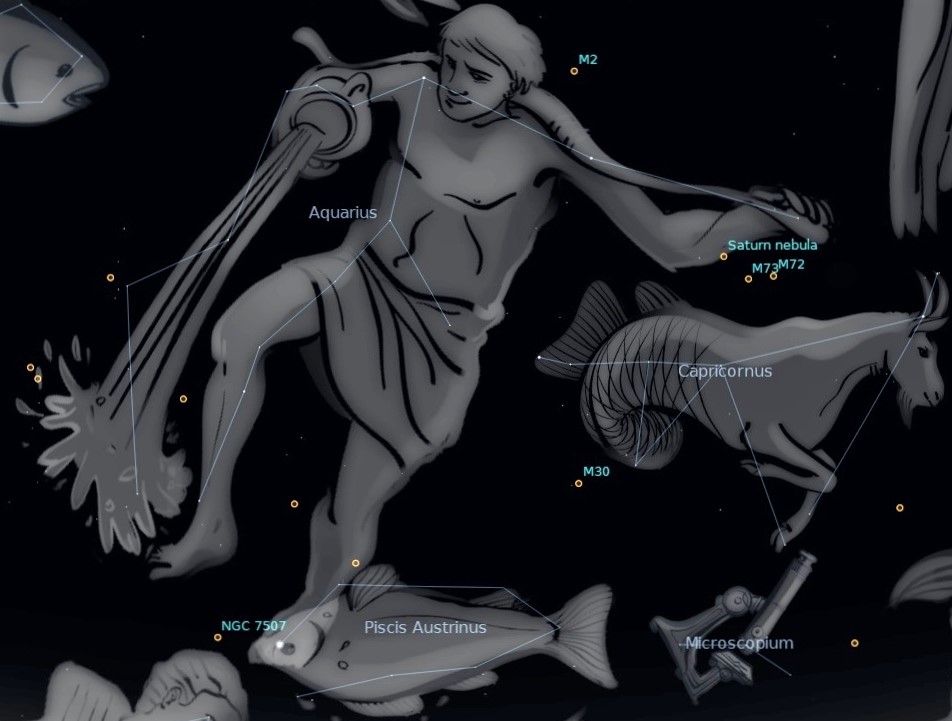This Week’s Sky at a Glance, 2021 October 9 – 16 ~by Curt Nason
Aquarius the Water Bearer is the source of all the water associated with our southern autumn constellations. It is situated among Pisces to the east and Capricornus to the west, with Pegasus north and Pisics Austrinus south. Its western end stretches over top of Capricornus. Most of the stars of Aquarius are relatively dim but one asterism stands out, the tight group of four stars that forms the Water Jar. Resembling a circle with three spokes, this asterism is also called the Steering Wheel.
One tale from mythology has Aquarius representing Ganymede, the handsome son of a Trojan king. Zeus was attracted to the lad and sent his pet eagle to kidnap him. Ganymede was given the important position of cup bearer (wine pourer) at Olympian feasts. There may have been another motive for the kidnapping, for the moons of the planet Jupiter are named for Zeus’s lovers and Ganymede is the largest of those moons.
A few Messier objects lie within Aquarius, the best being the globular cluster M2. I usually star hop to this one by going from a star in the neck of Pegasus to its ear, and extending that line an equal distance. A fainter globular cluster, M73, is above the back of Capricornus, and just to its east is enigmatic M73. Stargazers wonder how this four-star asterism made it to the Messier list. Nearby to the northeast a moderate-size telescope might reveal the Saturn Nebula, the glowing gaseous remnant of a dead star that somewhat resembles the ringed planet.
This Week in the Solar System
Saturday’s sunrise in Moncton is at 7:28 am and sunset will occur at 6:43 pm, giving 11 hours, 15 minutes of daylight (7:32 am and 6:49 pm in Saint John). Next Saturday the Sun will rise at 7:37 am and set at 6:30 pm, giving 10 hours, 53 minutes of daylight (7:41 am and 6:36 pm in Saint John).
The Moon is near Venus on Saturday and at first quarter just past midnight on Wednesday morning. On Tuesday it is below Saturn, and on Wednesday it anchors a large triangle with Jupiter and Saturn that resembles a slightly tilted version of their host constellation Capricornus. Venus approaches the red supergiant star Antares in Scorpius this week, passing above it next weekend. Mercury is at inferior conjunction on Saturday, and it will soon be starting its best morning apparition for the year. Saturn is stationary on Sunday, after which it resumes its eastward motion against the stars. Telescope users can watch the shadow of Jupiter’s moon Ganymede cross the planet’s cloudtop between 8 pm and 11:30 on Monday, and see the Red Spot for the first two hours. Rural observers might see the morning zodiacal light over the week if the sky is clear.
Questions? Contact Curt Nason.

